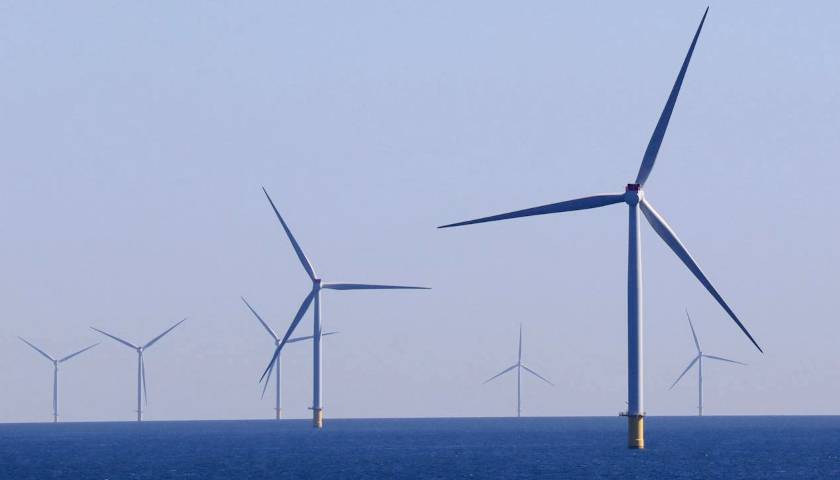by Nick Pope
A new study has identified a potentially massive problem for offshore wind developments that could further hinder the Biden administration’s push for the technology.
The study, published in a scientific journal called Wind Energy Science and authored by researchers from the University of Colorado and the National Renewable Energy Laboratory (NREL), focuses on what happens when the presence of nearby wind turbines reduces wind speeds for other turbines and their ability to produce power. The researchers project that the “wake effect,” the technical name for the phenomenon, could lead to a loss of up to 38 percent of power generation at one East Coast offshore wind development.
 The Biden administration has big hopes for the offshore wind industry, with a stated goal of having the technology provide enough electricity to power ten million American homes by 2030. Despite the availability of generous government subsidies, that goal looks to be out of reach, according to Reuters, as inflation, high borrowing costs, logistical problems and supply chain woes have taken their toll on developers.
The Biden administration has big hopes for the offshore wind industry, with a stated goal of having the technology provide enough electricity to power ten million American homes by 2030. Despite the availability of generous government subsidies, that goal looks to be out of reach, according to Reuters, as inflation, high borrowing costs, logistical problems and supply chain woes have taken their toll on developers.
The study found that the “wake effect” is typically most pronounced within individual wind farms, but some summer weather conditions could allow reductions in wind speeds caused by turbines to reach as far as 55 kilometers downwind. In some cases, one development’s “wake effect” could cause a reduction of up to 15 percent in other farms’ output, the study found.
Biden’s Climate Bill Boosted An Offshore Wind Giant, But His Economy Brought It To The Brink https://t.co/AF7SPT2FNu
— Daily Caller (@DailyCaller) November 3, 2023
“Unfortunately, summer is when there’s a lot of electrical demand,” Dave Rosencrans, a doctoral student at the University of Colorado who worked on the study, told CU Boulder Today. “We showed that wakes are going to have a significant impact on power generation. But if we can predict their effects and anticipate when they are going to happen, then we can manage them on the electrical grid.”
The possibility for weaker output in the summer months could be an issue given that power demand typically peaks on the hottest stretches of the year, a point that the study’s authors acknowledge.
“Reduced power production during summer may be problematic as New England’s top-10 utility demand days since 1997 have all occurred in July or August,” they wrote in the study.
The study’s findings may undermine some existing assumptions about how effective and efficient the technology is, according to E&E News.
“It’s a wake-up call for the industry,” Mike Optis, president of Veer Renewables and one of the study’s authors, told E&E News. “Wake effects can drastically impact offshore wind power production, certainly more than we thought.”
Despite the ambitious projections set out by some policymakers, market analysts and media outlets, the industry has not rebounded much in 2024 after enduring a rough year in 2023.
Numerous developers cancelled projects or attempted to renegotiate key contracts in 2023 as financial and logistical issues ate into their projects’ profitability, and several developments have been effectively cancelled or postponed so far in 2024.
Neither the White House nor the Department of Energy responded immediately to requests for comment.
– – –
Nick Pope is a reporter at Daily Caller News Foundation.
Photo “Offshore Wind Farm” by Damir.




